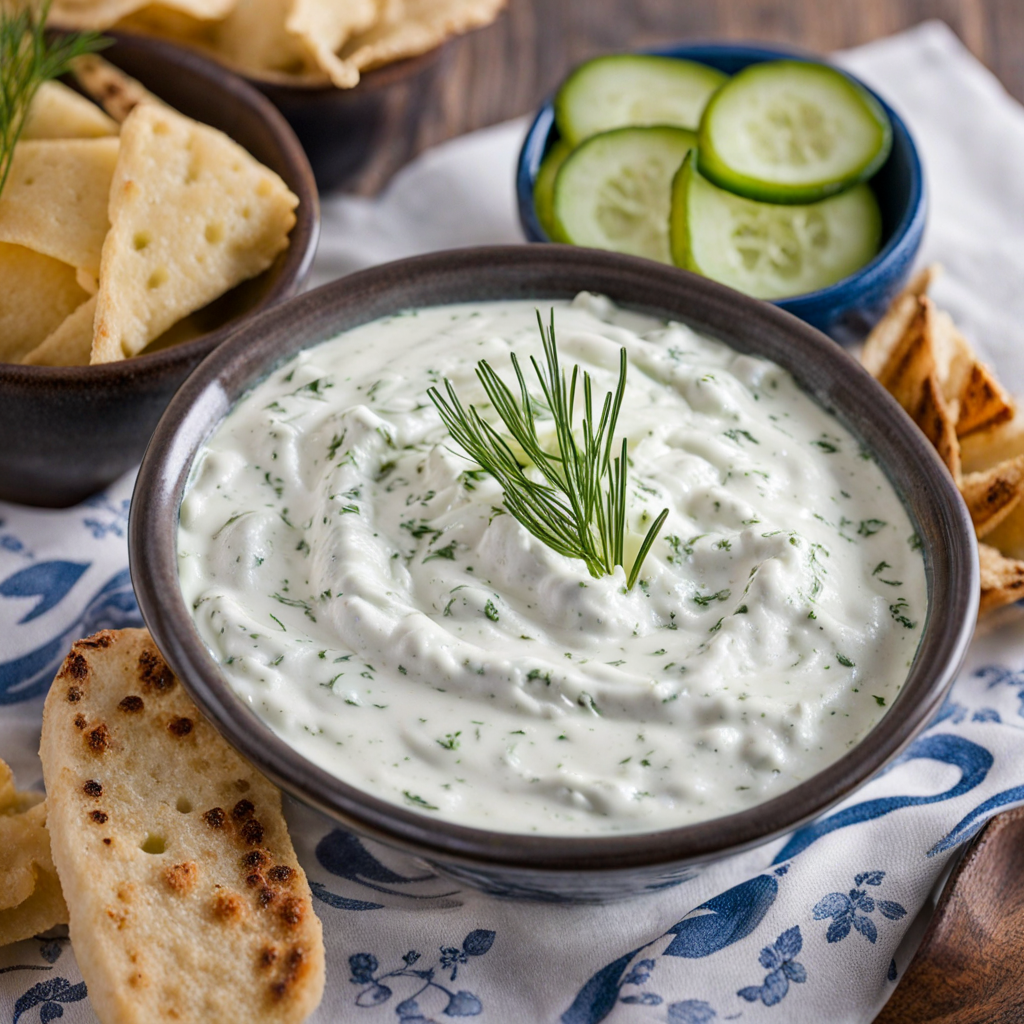Revani
Revani is a traditional Greek dessert that showcases the delightful marriage of semolina and syrup, resulting in a moist, spongy cake that is both comforting and refreshing. Made primarily from fine semolina, eggs, sugar, and yogurt, this cake has a unique texture that sets it apart from other confections. The base is lightly flavored with vanilla and sometimes hints of citrus, which complements the sweetness of the syrup beautifully. The golden hue of the cake, often adorned with slivers of almonds or pistachios, makes it visually appealing, inviting you to indulge in its rich flavors. The magic of Revani truly lies in the syrup that is poured over the warm cake after it has been baked. Typically made from sugar, water, and a splash of lemon juice, the syrup seeps into the cake, infusing it with a sweet and tangy essence. This duality of flavors creates a lovely balance that keeps each bite moist and satisfying. The cake absorbs the syrup perfectly, making it a delightful treat that is not overly sweet but rather a harmonious blend of flavors that dance on the palate. Served at room temperature or chilled, Revani is often enjoyed as a dessert after a hearty meal or as a sweet accompaniment to coffee or tea. Its versatility allows it to be served at various occasions, from festive celebrations to simple family gatherings. Each piece of Revani offers a taste of Greek tradition and hospitality, making it a must-try for anyone eager to explore new culinary horizons.
How It Became This Dish
The History of Ρεβανί: A Sweet Journey Through Time #### Origins in Antiquity The history of Ρεβανί, also known as Revani, stretches back to the heart of the Mediterranean, where the sweetness of life and the richness of culture intertwine. This traditional Greek dessert, a semolina-based cake drenched in syrup, is a testament to the culinary evolution that has taken place across the ages. Its roots are often traced to the Byzantine Empire, where the blending of cultures led to the creation of many iconic dishes that are still celebrated today. The name "Revani" is believed to be derived from the Persian word "ravan," which means "to flow" or "to run," alluding to the syrup that soaks the cake. This connection to Persian culture highlights the long-standing influences that have shaped Greek cuisine, particularly during the Byzantine period when the Empire was a melting pot of various traditions. #### Cultural Significance Ρεβανί holds a special place in Greek culture, often served during religious celebrations, weddings, and festive gatherings. Its presence at these significant events underscores the dessert's role as a symbol of joy and communal bonding. In Greek tradition, food is not merely sustenance; it is an integral part of social and familial ties. The act of sharing a slice of Revani during a celebration epitomizes hospitality and the spirit of togetherness that permeates Greek culture. The cake's moist, syrupy texture and delicate sweetness make it a versatile dessert that appeals to various palates. Its richness caters to the festive spirit, while its simplicity reflects the humble origins of Greek cooking. Revani embodies the philosophy of using readily available ingredients—semolina, eggs, sugar, and yogurt—transforming them into a dish that brings people together. #### Development Through Time As Greece transitioned through various historical phases—from the Byzantine Empire to Ottoman rule and into the modern era—Revani evolved alongside the changing culinary landscape. Under Ottoman influence, many traditional Greek desserts were enriched with the use of aromatic spices and nuts. The incorporation of ingredients such as almonds and pistachios into Revani represents this fusion of flavors, which became a hallmark of many Mediterranean sweets. In the 19th century, as Greece gained independence and began to establish its national identity, traditional dishes like Revani were embraced as symbols of cultural heritage. Cookbooks from this period began to include regional variations of the dessert, showcasing local ingredients and unique preparation methods. The use of coconut, for instance, emerged in some recipes, reflecting the influence of the Greek islands and their abundant natural resources. With the diaspora of Greeks around the world, Revani traveled far beyond its homeland. Immigrants brought their culinary traditions to new shores, adapting recipes to incorporate available ingredients. In places like the United States and Australia, Revani found a new audience, often served in Greek festivals or restaurants, where it became synonymous with Greek hospitality. #### Regional Variations Across Greece, Revani has inspired numerous regional variations, each with its unique twist. In Crete, for example, locals often prepare a version that incorporates fresh orange juice and zest, giving the cake a bright, citrusy flavor. The island's emphasis on local produce has led to the addition of ingredients like honey, which is drizzled over the top for an extra layer of sweetness. In contrast, the version found in the Peloponnese might include a touch of cinnamon or nutmeg, reflecting the region's affinity for spices. These adaptations not only highlight the diversity of Greek cuisine but also showcase the creativity and resourcefulness of the people who prepare them. #### Modern Interpretations In contemporary Greece, Revani continues to be a beloved dessert, but it has also undergone a transformation in presentation and flavor profiles. Modern chefs have begun to reinterpret traditional recipes, experimenting with flavors like matcha, saffron, and various fruit purees. This evolution reflects a broader trend in gastronomy where chefs are blending traditional techniques with innovative ideas, creating dishes that honor the past while embracing the present. The rise of culinary tourism in Greece has also contributed to the renewed interest in traditional desserts like Revani. Visitors seek authentic experiences, and local bakeries and restaurants are eager to showcase their heritage through food. Cooking classes and workshops that focus on traditional Greek pastries often feature Revani, allowing participants to connect with the culture through hands-on experience. In addition to restaurants, social media has played a pivotal role in revitalizing interest in traditional dishes. Food bloggers and influencers share recipes and variations of Revani, bringing it to a global audience. This digital age has allowed for the exchange of ideas and techniques, resulting in a rich tapestry of interpretations that honor the dessert's roots. #### Conclusion The journey of Ρεβανί from its ancient origins to its modern interpretations is a compelling narrative of cultural exchange, adaptation, and resilience. This beloved dessert not only satisfies the sweet tooth but also serves as a reminder of the rich tapestry of history that defines Greek cuisine. As a symbol of celebration and togetherness, Revani continues to hold a significant place in the hearts of many, both in Greece and around the world. It encapsulates the essence of Greek hospitality and the importance of food in forging connections across cultures and generations. In a world where culinary traditions are constantly evolving, Revani stands as a delicious testament to the enduring legacy of Greek gastronomy, inviting future generations to savor and celebrate its rich history. Whether enjoyed at a family gathering, a festive celebration, or a quiet moment at home, Revani remains a sweet slice of Greece, rich in flavor and brimming with stories waiting to be told.
You may like
Discover local flavors from Greece







